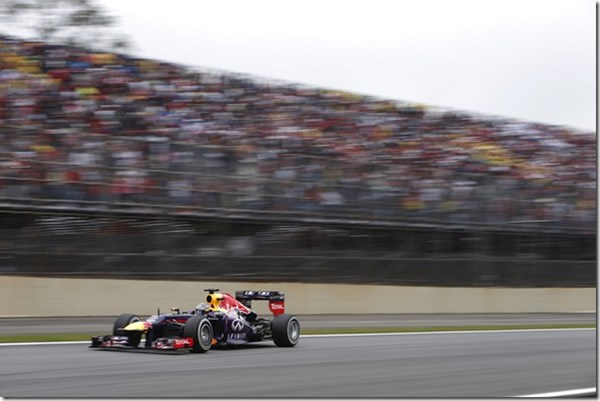Vettel, Victories and. . .CFD
As is undoubtedly known by anyone who cares, Sebastian Vettel of Infiniti Red Bull Racing, recently won his fourth Formula One world title in a row, which puts him in the ranks of Juan Manuel Fangio, Alain Prost and Michael Schumacher.
As is undoubtedly known by anyone who cares, Sebastian Vettel of Infiniti Red Bull Racing, recently won his fourth Formula One world title in a row, which puts him in the ranks of Juan Manuel Fangio, Alain Prost and Michael Schumacher. Which isn’t bad for a guy who had his first F1 start in 2007 at the U.S. Grand Prix, then held in Indianapolis.

The car he and teammate Mark Webber drove is the RB9. It proved to be the most successful car in Infiniti Red Bull Racing’s history, with 13 wins. The RB7 of 2011 was piloted to 12 wins.
The RB9 contributed to the team winning with Constructors’ Championship, with 596 points. That’s 236 more than the number that second place team Mercedes earned.
When the RB9 was unveiled last February, Adrian Newey, chief technical officer of Infiniti Red Bull Racing, in response to a question about how the RB9 was improved over the RB8, said, “It’s all in the details rather than saying the gains are in this or that. We’ve tidied up some bits we thought could be improved upon—but as is usual these days, this is a car in transition.”
Newey acknowledged, “Our simulation results tell us we’ve taken a step forward—but we don’t know what everybody else has done.”
What may not even be known by F1 fans is that some of the simulation tech in question comes from ANSYS, which provides computational fluid dynamics (CFD) and high-performance computing (HPC) solutions for the team. Said Nathan Sykes, CFD and FEA Tools team leader at Infiniti Red Bull Racing, “We are confident that the speed and accuracy from ANSYS simulation solutions ultimately translates to victories on the track while helping us remain compliant with tight racing regulations.”
Given the success of the team, that’s quite an endorsement.
RELATED CONTENT
-
Ford Simulates Gravity
Although virtual development tools are being used more and more, there are still some things that are done in the real world.
-
On Traffic Jams, Vehicle Size, Building EVs and more
From building electric vehicles—and training to do so—to considering traffic and its implication on drivers and vehicle size—there are plenty of considerations for people and their utilization of technology in the industry.
-
There’s CAD. And There’s Clay.
If you were to go back in time to the turn of this century (sounds more amazing than “sixteen years ago”) and asked someone in the automotive product development community about the dominance that would exist for all manner of digital design tools, you would undoubtedly get a robust response that would make it absolutely clear that by 2016—if not before—the digitization of design would be at full throttle and that people would be working in studios with Oculus Rift headgear as commonly as prescription lenses.


.jpg;width=70;height=70;mode=crop)







